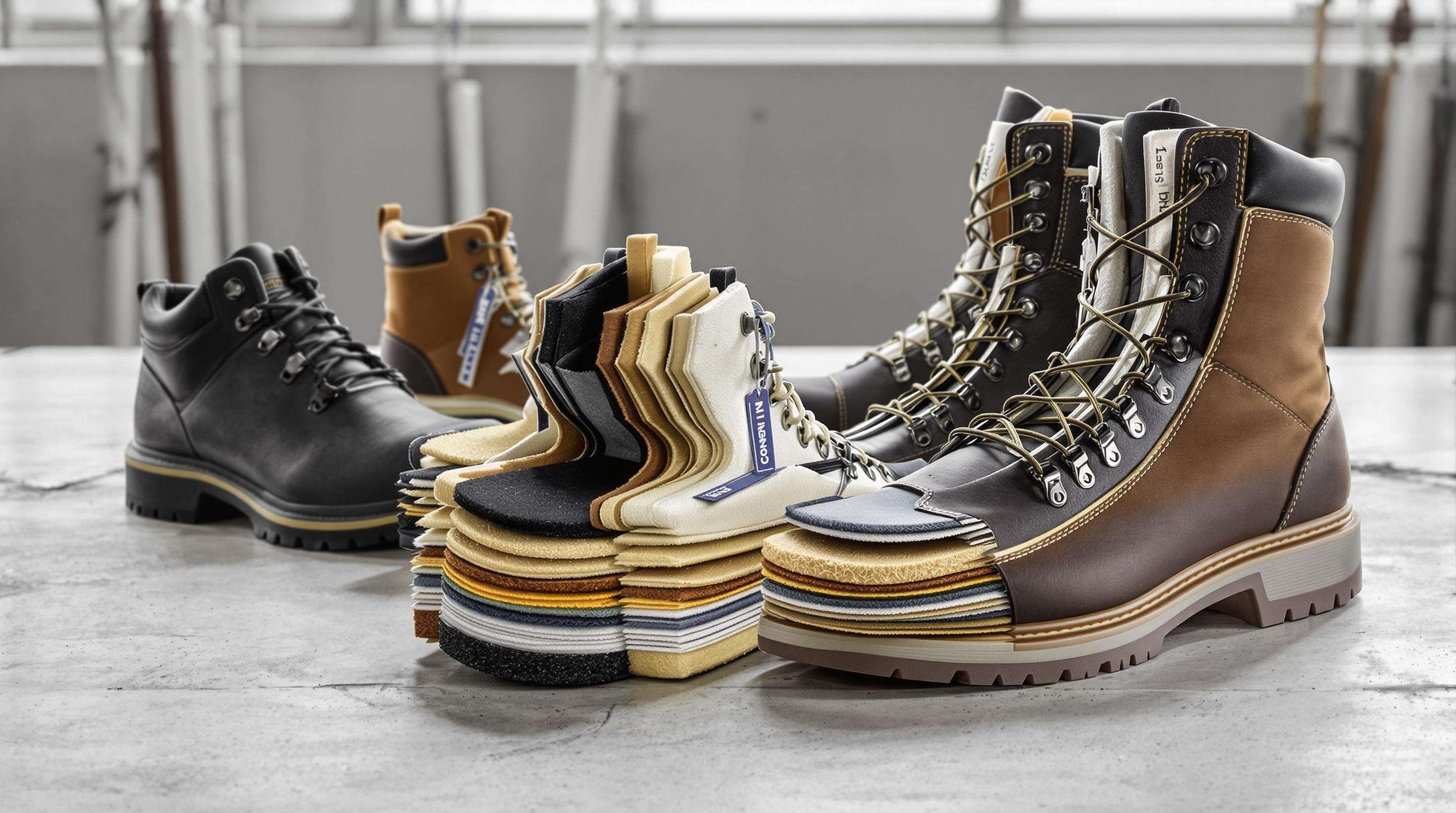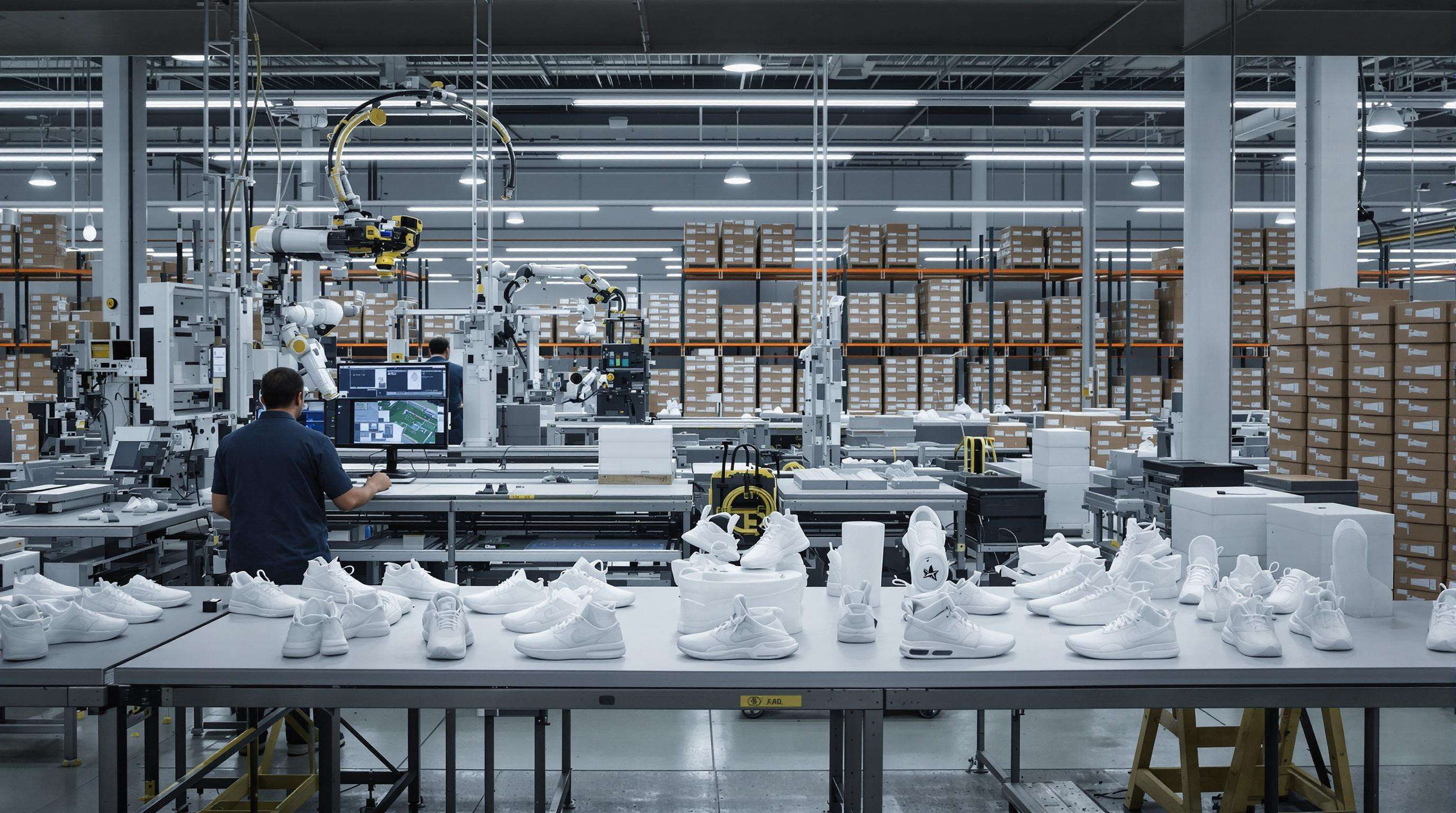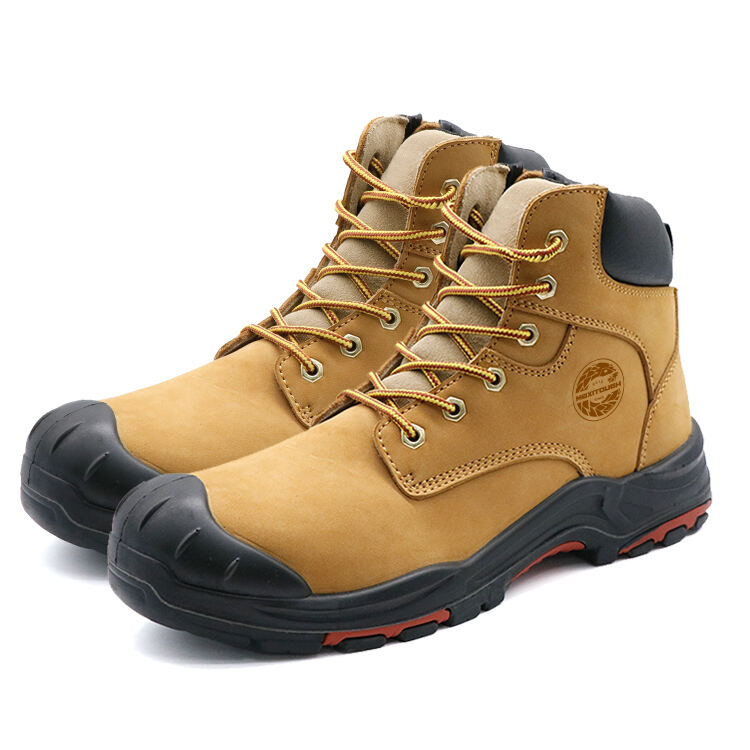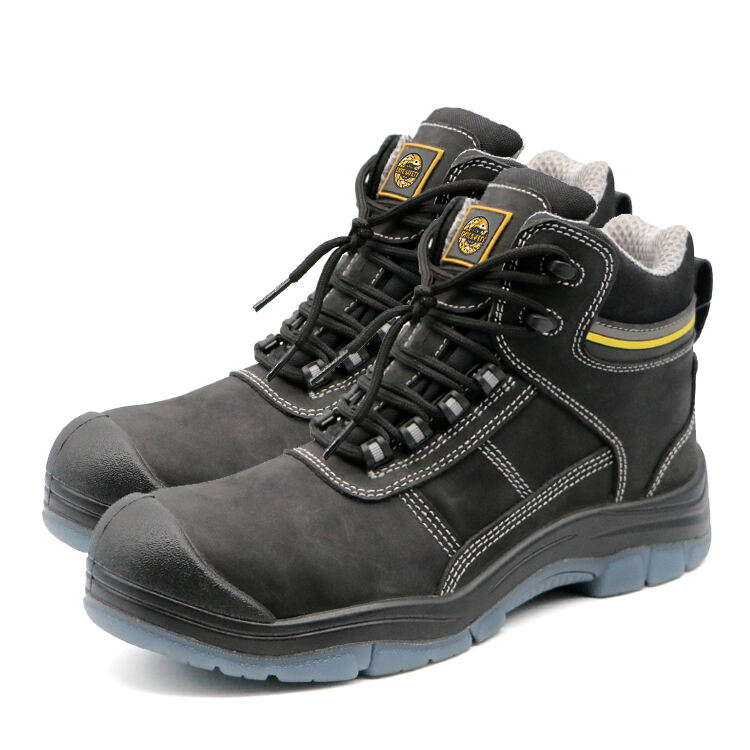
How to Choose the Best Sneaker Manufacturer for Custom Safety Footwear
Understanding Safety Standards and Regulatory Compliance for Durable Safety Sneaker Manufacturing
Key Safety Footwear Standards (e.g., ASTM F2413, EN ISO 20345, OSHA Requirements)
Safety shoes need to pass certain basic tests if they're going to protect workers properly. Take ASTM F2413 for example. This standard looks at how well the toes can handle impacts up to 75 foot-pounds and compression forces reaching 2,500 pounds. Across the pond, things get even stricter with EN ISO 20345 requiring 200 joules of impact resistance and 15 kilonewtons of compression strength. That's actually about 20% tougher than what American regulations demand, showing there's quite a gap between different regions' approaches. OSHA has its own rules too under 29 CFR 1910.136 that force companies to provide proper foot protection in dangerous workplaces. One important detail? Soles need to resist slipping with at least a COF rating of 0.47. And here's something worth remembering: according to BLS data from 2022, around three out of four foot injuries in the workplace happen because electrical safety standards weren't followed. Compliance isn't just paperwork it saves lives and prevents serious accidents on the job site.
Role of NFPA 70E and Industry-Specific Regulatory Compliance in Manufacturing
Electrical work environments need proper PPE according to NFPA 70E standards. Safety boots must be made from materials that can handle at least 40 calories per square centimeter in areas where arcs are likely to occur. The oil and gas field has different needs too. When gear meets ASTM F2892 specs, it actually works better against static buildup. Tests show these compliant items cut down on electrostatic discharge problems by about two thirds versus regular equipment (National Safety Council data from 2023). Because each industry faces unique dangers, manufacturers have to adjust their materials and build techniques accordingly if they want to provide real protection where it matters most.
Certification Verification Process When Selecting a Manufacturer
To ensure authenticity and ongoing compliance, verify third-party certifications from recognized bodies:
- ISO 9001: Validates quality management systems and consistent production with defect rates below 2%
- SATRA TM144: Confirms sole durability through 100,000+ flex cycles
- ILAC-MRA: Guarantees global recognition of test results with 95% lab accuracy
Always request original, dated test certificates within the last 12 months to avoid reliance on expired or falsified documentation.
Controversy Analysis: Gaps Between International and Regional Safety Standards
There's a real problem when it comes to compression standards between the US and Europe. The American ASTM F2413 standard sets the bar at 12.5 kN, whereas the European EN ISO 20345 standard goes all the way up to 15 kN. This difference has led to no fewer than 58 regulatory disputes since 2020 according to WTO data from last year. Manufacturers trying to operate globally find themselves stuck in this regulatory maze. Things get even trickier for companies operating in emerging markets where about one third of footwear fails to meet puncture resistance requirements for midsoles. Different countries follow different rules such as DIN 4843 versus AS/NZS 2210.3 which creates confusion. And let's not forget the human cost here either. Workers exposed to these substandard products face higher risk of injuries, something that can cost businesses around seven hundred forty thousand dollars each time it happens based on Ponemon Institute research from 2023.
Evaluating Material Quality and Construction Techniques for Superior Durable Safety Sneaker Performance

Materials Used in Safety Footwear: Leather, Rubber, Synthetic Fabrics, and Polyurethane
What materials go into making work boots makes all the difference when it comes to how well they protect feet and how comfortable they actually are. Full grain leather stands out because it resists wear better than most other materials and lets air circulate naturally, which is why many workers still prefer it for tough jobs on construction sites or farms. The soles made from vulcanized rubber really grip surfaces even when things get slippery from rain or oil spills around machinery. For those looking to lighten the load, synthetic fabrics like nylon and polyester cut down on weight somewhere between 18 to 22 percent while keeping the shoes durable enough for daily use. These days, polyurethane midsoles have become pretty popular among manufacturers since they help absorb impact and bounce back some energy, meaning workers don't tire quite as fast after standing on their feet for hours straight.
Advanced Materials Like Kevlar, Thinsulate, and Gore-Tex in Custom Durable Safety Sneakers
Specialized materials really boost performance when put to work in their intended applications. Take Kevlar for instance. The liners made from this stuff offer excellent protection against cuts and punctures, yet they weigh far less than traditional steel alternatives. Then there's Gore-Tex, which manages both waterproofing and breathability at the same time something that matters a lot to workers on their feet all day. According to recent surveys, about two thirds of industrial workers rank foot climate control as their number one comfort issue. And let's not forget Thinsulate insulation either. This material keeps people warm even in brutal cold down to minus 40 degrees Fahrenheit, but stays comfortable right up through 80 degree weather too. What makes it so great is how it delivers all this thermal protection without making boots feel bulky or restrictive, which means these insulated products can actually be worn throughout the entire year.
Footwear Manufacturing Processes: Injection Molding vs. 3D Mapping for Precision Fit
The injection molding process gives manufacturers reliable sole bonding when producing shoes at scale, plus it keeps things watertight where they need to be. But there's another game changer happening too - 3D foot mapping tech lets designers create custom upper parts that fit around nearly all foot shapes (about 97.3%, according to measurements). Recent research from last year showed factory workers who wore these specially mapped sneakers had roughly 40% fewer blisters on their feet and experienced almost 30% less strain around the ankles during shifts. Big name shoe companies are starting to mix these approaches together now. They typically stick with injection molding for the bottom parts of shoes while turning to 3D scanning techniques to craft those upper sections that actually wrap around our feet in a more natural way.
Sole Types and Slip Resistance Ratings (SRA/SRB/SRC) in Rubber, PU, TPU, and EVA
Slip resistance is categorized by EU standards: SRA (dry ceramic), SRB (wet steel), and SRC (both). SRC-rated soles offer the highest performance, particularly on oily surfaces, outperforming basic designs by 80%. Key material comparisons include:
| Material | Slip Resistance | Durability | Weight |
|---|---|---|---|
| Rubber | SRC (0.58 COF) | 18-24 mo | 650g |
| TPU | SRB (0.47 COF) | 12-18 mo | 520g |
| EVA | SRA (0.38 COF) | 6-9 mo | 390g |
Thermoplastic polyurethane (TPU) provides the best balance of weight, durability, and moderate slip resistance, lasting 40% longer than EVA.
Case Study: Impact Resistance and Puncture Protection Using Composite vs. Steel Toe Caps
A 12-month field evaluation compared steel and composite toe caps under ASTM F2413 conditions:
- Composite Caps: 33% lighter, maintained 99.2% impact protection
- Steel Caps: Offered 28% better puncture resistance but conducted more heat and cold
The 2024 Footwear Materials Report indicates composites have gained 19% market share since 2021, especially in electrical and cold storage environments where weight and thermal insulation are critical.
Essential Protective Features in High-Performance Durable Safety Sneaker Designs
Steel Toe vs. Composite Toe: Safety, Weight, and Thermal Conductivity Trade-offs
Steel and composite toe caps both pass the ASTM F2413-18 I/75 impact test requirements, yet they offer very different experiences when it comes to comfort. The traditional steel toes tip the scales at around 14 to 18 ounces per pair, and they tend to transfer heat quite well which can make feet either freezing cold or sweltering hot depending on conditions. Composite options constructed with materials like fiberglass or carbon fiber cut down on weight by about 30%, coming in between 9 and 12 ounces total. These lighter alternatives also provide better insulation against temperature changes. A recent industry poll from last year found that nearly 6 out of 10 workers gravitate toward composite toes for jobs requiring lots of movement around the worksite, even though many still opt for steel protection in areas where heavy impacts are more likely to occur.
| Feature | Steel Toe | Composite Toe |
|---|---|---|
| Weight | 14-18 oz per pair | 9-12 oz per pair |
| Thermal Conductivity | Conducts heat/cold | Insulates against extremes |
| Certifications | ASTM I/75, OSHA | ASTM I/75, EN ISO 20345 |
Puncture Resistance and Electrical Hazard Protection in Industrial Environments
Midsoles designed to resist punctures need to handle around 270 pounds of pressure according to ASTM standard F2413-18 P1. Most manufacturers accomplish this using either 4.5mm thick Kevlar material or woven steel mesh layers. When it comes to protecting against electrical hazards, the soles made from non conducting rubber create a barrier between workers and live circuits, keeping them safe even when exposed to voltages as high as 18,000 volts under normal dry conditions, following guidelines set forth in NFPA 70E-2021. Real world evidence shows these protective boots make a difference too. Oil refinery operations reported a significant drop in electrical accidents after switching to shoes certified for both EH (electrical hazard) and SRC (puncture resistance). The numbers tell the story pretty clearly actually, with incident rates falling by nearly 37 percent across four years according to recent OSHA field reports collected throughout the industry.
Antistatic Properties and Slip Resistance for High-Risk Work Zones
For areas where explosions are a real risk, such as pharmaceutical facilities or chemical laboratories, antistatic footwear needs to keep electrical resistance within the range of 10^5 to 10^11 ohms according to EN ISO 20345 standards from 2021. This helps stop dangerous static electricity buildup. When it comes to slip resistance, two main factors matter: what the sole is made of and how the treads are designed. Shoes with SRC rating manage to reach at least 0.47 coefficient of friction on oily floors. Tests show these perform about 31 percent better than their SRA/SRB counterparts in lab conditions. The difference might seem small, but in hazardous work settings, every bit counts toward safety.
Trend Analysis: Rise of Non-Metallic Toe Protection in Modern Safety Footwear
Non-metallic toe caps now represent 42% of industrial safety footwear sales (2024 Safety Equipment Market Report), driven by demand in aerospace, electronics, and MRI-safe environments. Hybrid models combining carbon fiber reinforcement with 3D-mapped PU cushioning demonstrate 19% greater durability over five years compared to traditional steel-toe designs.
Customization and Industry-Specific Design Options for Durable Safety Sneakers
Tailoring Durable Safety Sneaker Designs for Construction, Manufacturing, and Healthcare
Different workplaces come with their own set of dangers, which means workers need shoes made specifically for those environments. On construction sites, people really need soles that can withstand punctures plus good ankle support since the ground is never flat. Factories often require shoes with antistatic properties to prevent sparks, and sometimes they'll add extra protection around the metatarsal area too. For healthcare workers, the focus shifts to materials that repel fluids and soles that won't slip easily on wet surfaces, keeping both patients and staff safe while maintaining proper hygiene standards. According to recent research published last year, nearly three quarters of all foot injuries happen because workers are wearing improper footwear. That statistic alone should make employers think twice about investing in proper safety gear for different job roles.
OEM/ODM Manufacturing Experience and Design Flexibility in Safety Footwear
Brands looking for OEM or ODM partners get something pretty valuable: the ability to blend their own design ideas with necessary safety specs. The better manufacturing setups actually have these cool tools like 3D foot scanners and adjustable molds that let them tackle really specific requests. Think about things like making shoes that won't catch fire near welding areas or lining materials that keep feet dry even in hot climates. Market research shows an interesting trend too. Around 42 percent of people buying footwear want manufacturers who can make quick prototypes. This cuts down on how long products take to reach store shelves by roughly two weeks give or take a few days depending on circumstances.
Color, Logo, and Functional Customization: Balancing Branding and Safety
When it comes to branding on equipment, things like logos, color schemes, and those shiny reflective strips shouldn't interfere with worker safety. The smart approach is to go for dyes that won't poison anyone and won't wear off easily, plus make sure those reflective parts are placed where they won't get damaged during normal use. Some extra features can actually help too, like RFID chips for tracking gear or special fabric linings that keep workers dry in hot conditions. But here's the catch many companies run into these days: around two thirds of facility managers simply won't approve any design where brand markings take up more than about 8% of areas that need protection. They put regulatory requirements above how something looks, according to recent industry safety reports from last year.
Assessing Manufacturer Scalability, Prototyping, and Long-Term Partnership Potential

Manufacturing Scalability and Lead Times for Bulk Orders of Durable Safety Sneakers
Scalability depends on automation, workforce agility, and supply chain resilience. Facilities with automated assembly lines reduce lead times by 30-45 days compared to manual operations (2023 footwear benchmarks). Opt for manufacturers offering tiered minimum order quantities (MOQs) to maintain flexibility during demand fluctuations while ensuring consistent quality across production runs.
Injection Molding Efficiency and Cost Implications for Long-Term Production
The injection molding process creates those watertight seams and sturdy toe boxes that make safety sneakers so durable, which is why most manufacturers stick with this approach for their production runs. According to Footwear Tech Journal from last year, getting started can be pricey with mold tooling costing anywhere between eight thousand to fifteen grand upfront. But once they hit around five thousand pairs made, the cost per unit actually goes down by nearly half. Many companies are now switching to these energy saving hydraulic systems not just because it cuts down on monthly expenses, but also because green manufacturing practices have become pretty much table stakes in today's market for safety footwear brands looking to stay competitive.
Strategy: Partnering with Manufacturers Offering Prototyping and Sample Testing
When looking for manufacturing partners, it's worth finding ones who offer 3D printed prototypes along with actual field testing so we can see how designs hold up before going into full scale production. Some research from last year showed pretty impressive results too. They found that going through multiple prototype versions cut down on defects by around two thirds, especially when it came to getting the toe caps right and figuring out better tread designs. Most companies should aim for at least three different samples to really test things out. This lets us check if workers will actually find them comfortable, whether the materials stand up to regular use, and how well they perform under different weather conditions.
Future-Proofing: How Emerging Trends in Smart Safety Footwear Influence Manufacturer Choice
Smart safety sneakers with embedded IoT sensors for impact monitoring and fatigue detection are projected to grow at 22% annually through 2028 (Smart Footwear Forecasts 2024). Select manufacturers with R&D expertise in conductive textiles, sensor integration, and wireless charging compatibility to future-proof product lines and align with evolving workplace safety standards.
Auditing Production Facilities and Building Contracts with Compliance & Innovation Clauses
Conduct unannounced audits to verify adherence to ISO 45001 and responsible waste management practices. Contracts should include provisions for bi-annual compliance testing, intellectual property protection, and mandatory investment3-5% of annual revenueinto advanced technologies like AI-driven quality control systems to ensure continuous innovation and accountability.
FAQs
What are the key safety standards for work boots?
Key standards include ASTM F2413 for impact and compression resistance, EN ISO 20345 for additional rigorous testing, and OSHA requirements under 29 CFR 1910.136 for workplace foot protection.
How do materials like Kevlar and Gore-Tex improve safety sneakers?
Kevlar provides excellent cut and puncture resistance, while Gore-Tex offers waterproofing and breathability. These materials enhance comfort and protection.
What manufacturing processes ensure sneakers fit properly?
Injection molding for soles and 3D foot mapping technology for uppers provide precise fit and comfort, reducing foot injuries.
Why is slip resistance important in safety sneakers?
Slip-resistant soles categorized by SRA, SRB, and SRC ratings offer better grip on different surfaces, crucial in preventing workplace accidents.

 EN
EN
 AR
AR BG
BG HR
HR CS
CS DA
DA NL
NL FI
FI FR
FR DE
DE EL
EL HI
HI IT
IT JA
JA KO
KO NO
NO PL
PL RO
RO RU
RU ES
ES SV
SV TL
TL ID
ID SR
SR VI
VI HU
HU MT
MT TH
TH TR
TR AF
AF MS
MS GA
GA BN
BN NE
NE

